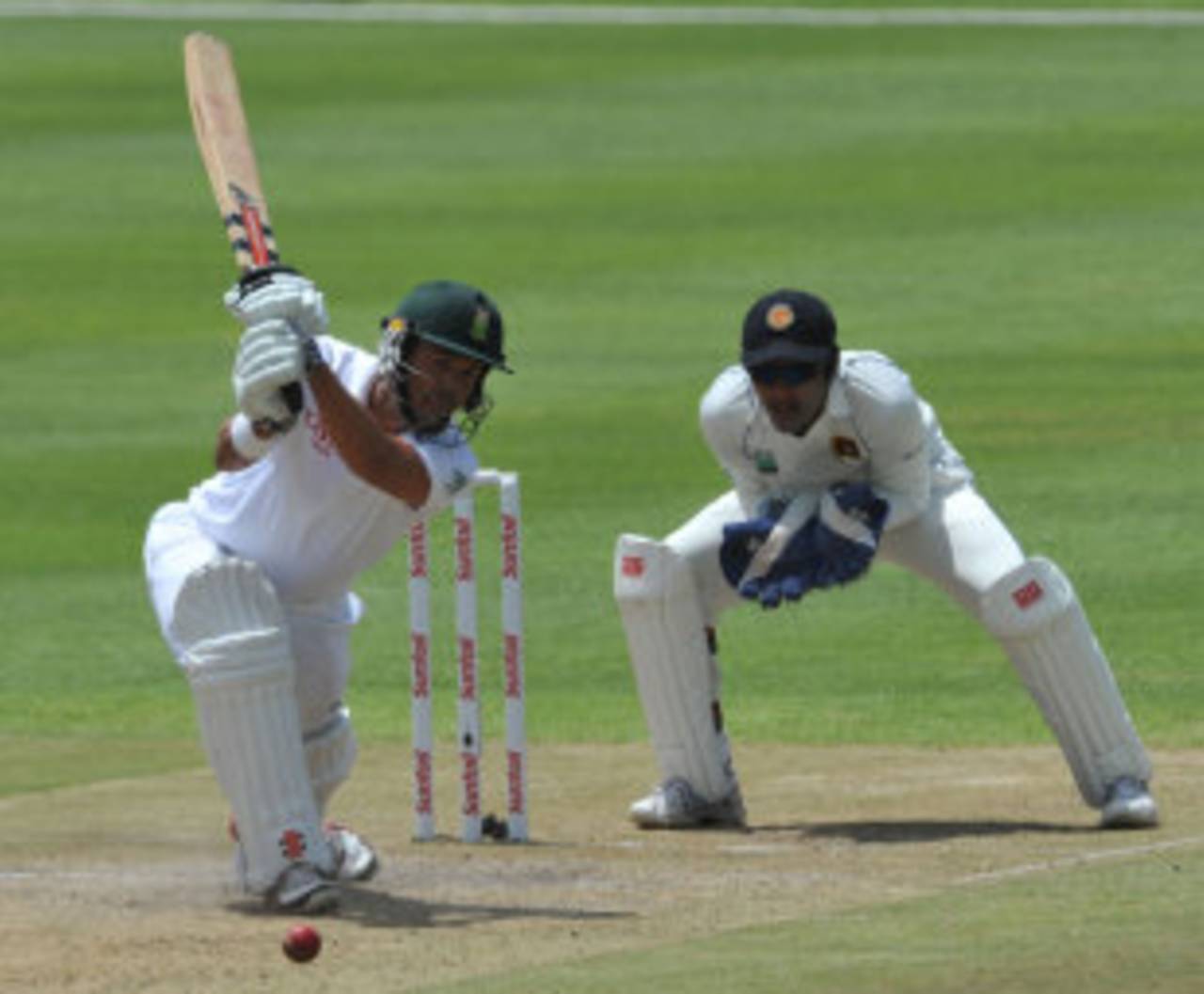A run a minute. Yes, it really was that many. Between them, South Africa and Sri Lanka put on 382 runs in 382 minutes. The run-rate only dipped below four as the day entered its twilight zone. Astounding when you consider that less than two months ago at this ground, 23 wickets fell on a single day.
Newlands has been the summer's home of extremes, going from the breathlessness of the Australia Test to the intricate fascination of the current contest. While the
November match stood out in neon, attracting the attention of even those with an outside interest in the game, this fixture is made up of more delicate shades, the baby pinks, blues and greens that catch the eye of the most passionate of cricket lovers. So-called "batting matches" usually do that.
There's a particular patience that goes into watching someone craft an innings from single-figures, to double-digits, to a three-figure score and beyond.
Jacques Kallis' 224 took seven hours and 14 minutes to accumulate while AB de Villiers spent a shade over 300 minutes at the crease. Together, the pair put on a third of South Africa's runs and presented an artist's impression of the game.
The nuances of Kallis' innings were there to be marvelled at - from the way he went from playing the aerial pull to keeping it down, the timing of his drive and the soft clip to the leg side, in the space where he knows there is adequate time for two. For those who have admired Kallis, since his first hundred in Australia, to his two hundreds in two innings against India at Newlands last year, this innings was an illustration of the man himself. Beyond being graceful and classy, it was a show of supreme determination, the quality that Kallis uses to best describe himself.
Last year, bowlers enjoyed their most successful period in a decade. Tests everywhere saw bursts of wickets dictating results. The two Tests played this year suggest something different
De Villiers' display was more flashy and flamboyant and he invented strokes as his innings went on. Once his century came up, de Villiers mentally flexed the shoulders, freed the arms and pushed the accelerator. Chanaka Welegedera was subject to his tap to third man, Tillakaratne Dilshan to his slog-sweep and Rangana Herath to an outrageous punch over the covers. Kallis predicted that de Villiers could become "one of the greats of the game" and on the evidence of this performance, that could well turn out to be true.
Jacques Rudolph had the perfect situation to justify his inclusion in the Test squad. He was moved down to No. 6, after seven innings at the top, in which he failed to record a half-century. Rudolph's talent is not in doubt, his ability to translate it is.
This knock does not provide conclusive-enough evidence on whether he has been able to do that successfully. There will come situations where Rudolph will have to rescue the team from 130 for 4 to where he will have to bat out a day to save a match but this was not one of them. This time, he only had to build on what had already been laid. Still, he was able to do it successfully and at least that confirms his skills are still adequate and his desire still there.
Sri Lanka will look at South Africa's performances and wish they had had first use of the pitch. Dilshan, who may have been wary of putting himself in the firing line first, will now see that it was actually a calm sea he could have sailed on. He made up for his toss blunder with a blistering innings. It started with a streaky outside edge and ended with an attempt at a loft over long-on that Graeme Smith did well to hold on to. In between, there was the straight drive and the stab through point, the thump through mid-off and the top-edged pull.
The surface was there for Dilshan to brand with his name. Kumar Sangakkara and Mahela Jayawardene will feel the same. The former has only just vindicated himself with a century after three failings and the latter has yet to play an innings of authority in South Africa. The number 624 will mean something to them but even half of that - or a tad less - will probably suffice.
For the first time this South African summer, a tussle of the willow will play out, perhaps signalling a change in the drawing of battle lines in Test cricket, especially considering the way they have been marked out so far. Last year, bowlers enjoyed their most successful period in a decade. The average runs per wicket stood at 32.47, the lowest since 2000. Test matches everywhere from Cardiff to Hobart saw bursts of wickets dictating results. The two Test matches played this year suggest something different, that may not tempt the hit-and-run fans but that will thrill the rest.
Firdose Moonda is ESPNcricinfo's South Africa correspondent
